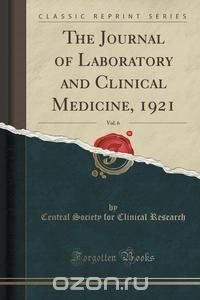Excerpt from The Journal of Laboratory and Clinical Medicine, 1921, Vol. 6
In a series of experiments performed at the Hygienic Laboratory in Washington in the year 1918 it was shown by Jackson and Smith that one of the most important and outstanding features of the acute symptoms of poisoning following the intravenous injection of arsphenamine solutions in dogs consists in the production of a very marked and prolonged rise in the pulmonary blood pressure. This within itself would perhaps be sufficient to account for a part, if not for all, of the milder toxic symptoms which are occasionally produced clinically by the injection of arsphenamine. But aside from the pulmonary vascular changes, there remained the possibility that the dyspnea and marked respiratory disturbances which are frequently present during "nitritoid crises" of severe, acute arsphenamine intoxication might be due to, or associated with, a marked bronchial constriction. This point was not investigated by Jackson and Smith although at that time the presence of some such factor as this was strongly suspected, particularly on account of the analogy in action on the bronchioles which is often exhibited among metallic salts. In the present work we have carried out some preliminary experiments in order to determine whether or not any true bronchial asthmatic action is produced by injections of arsphenamine.
The solutions used by us have been made up from "salvarsan" as produced by the H. A. Metz Laboratories in New York. Mr. Metz has very kindly supplied us with a quantity of "salvarsan" of lot No. H56. This was a particularly good batch as had been previously shown by laboratory tests and by extensive clinical use.
About the Publisher
Forgotten Books publishes hundreds of thousands of rare and classic books. Find more at www.forgottenbooks.com
This book is a reproduction of an important historical work. Forgotten Books uses state-of-the-art technology to digitally reconstruct the work, preserving the original format whilst repairing imperfections present in the aged copy. In rare cases, an imperfection in the original, such as a blemish or missing page, may be replicated in our edition. We do, however, repair the vast majority of imperfections successfully; any imperfections that remain are intentionally left to preserve the state of such historical works. Это и многое другое вы найдете в книге The Journal of Laboratory and Clinical Medicine, 1921, Vol. 6 (Classic Reprint) (Central Society for Clinical Research)
